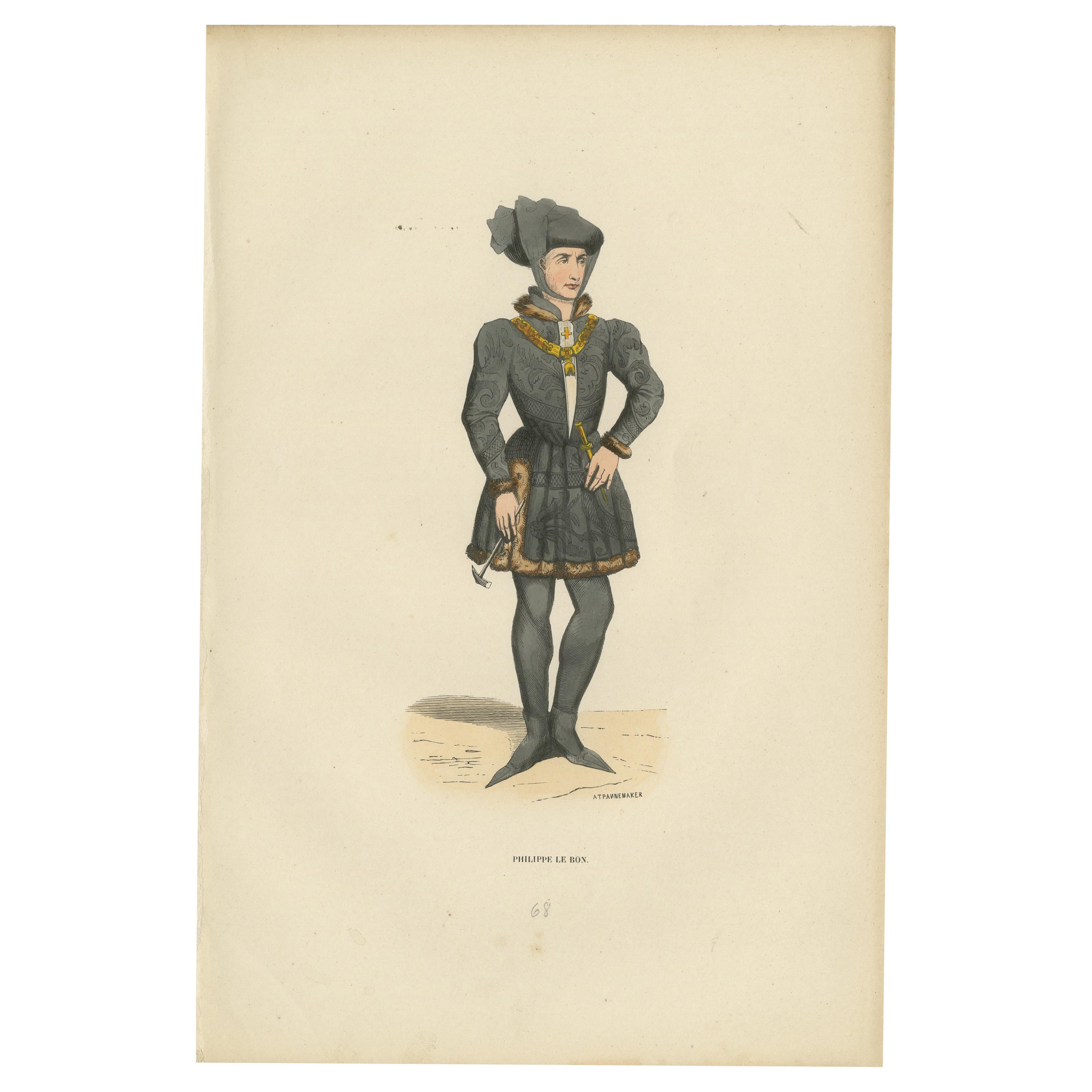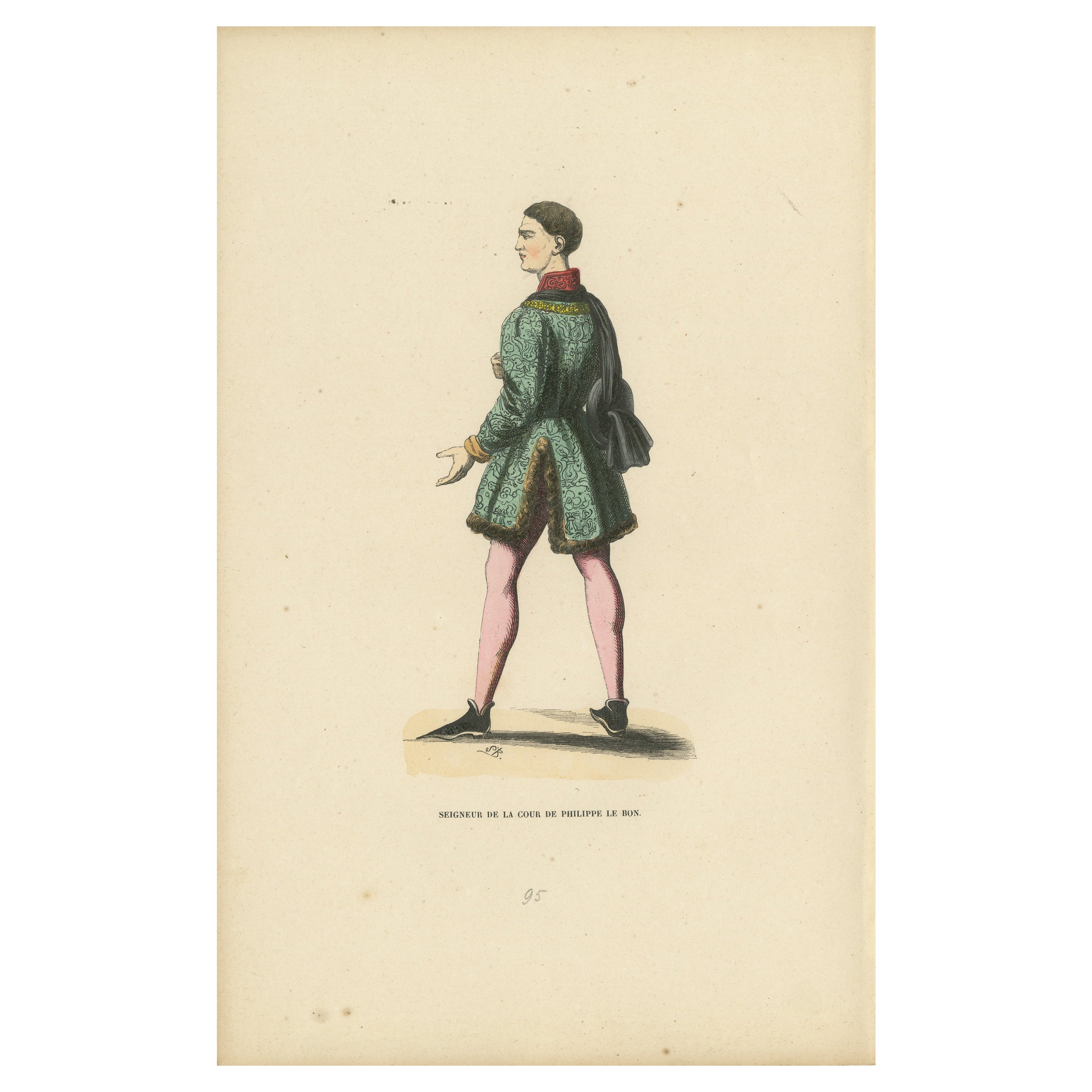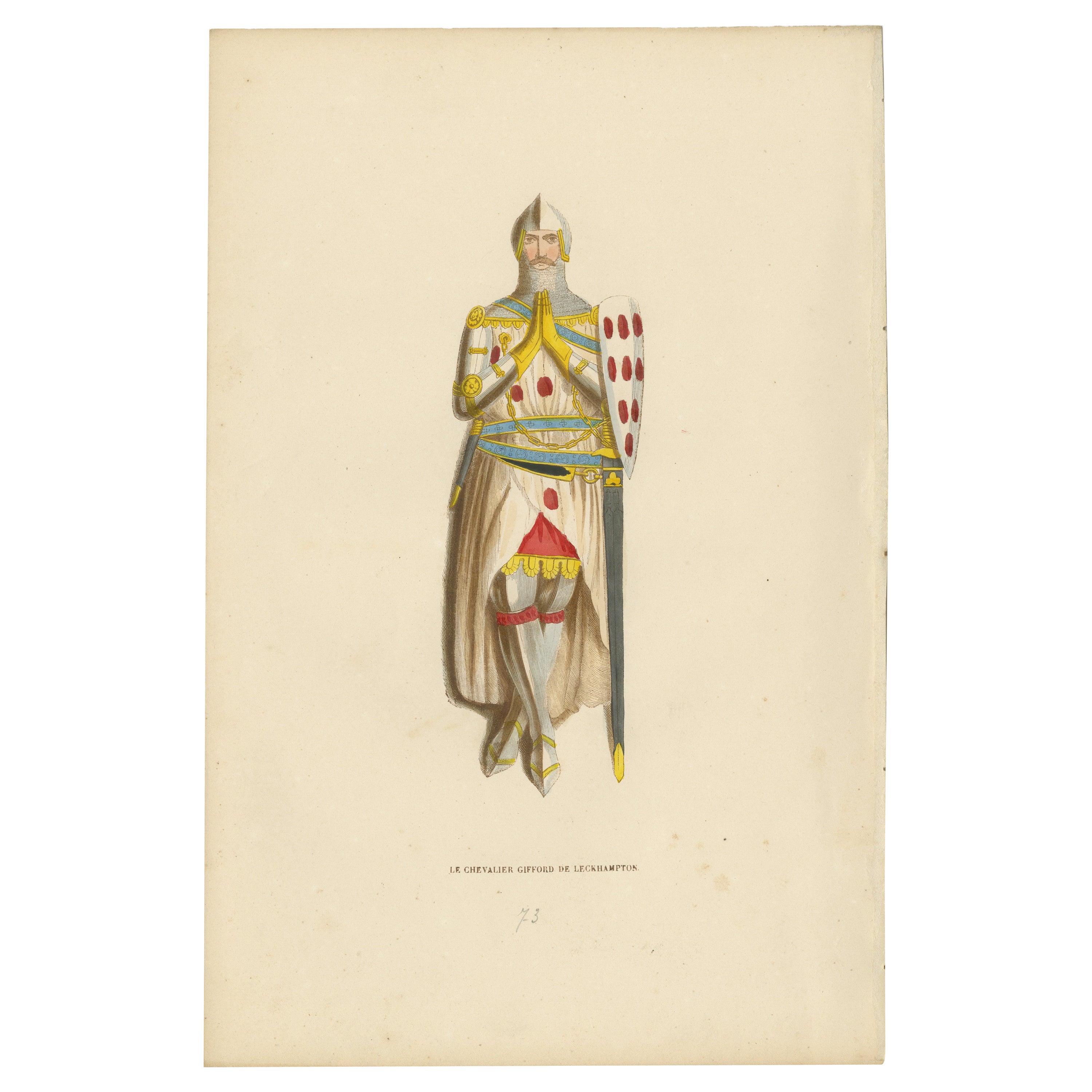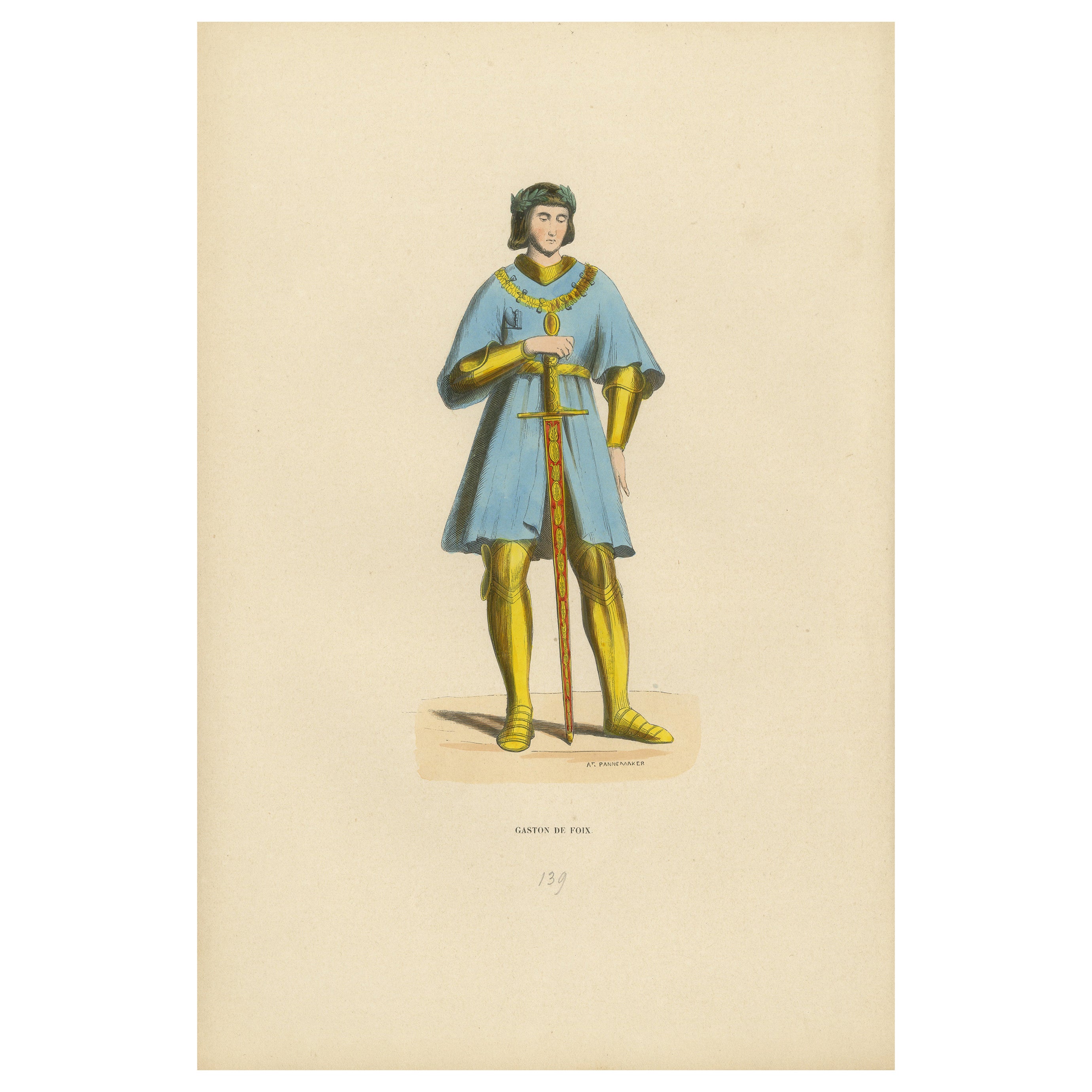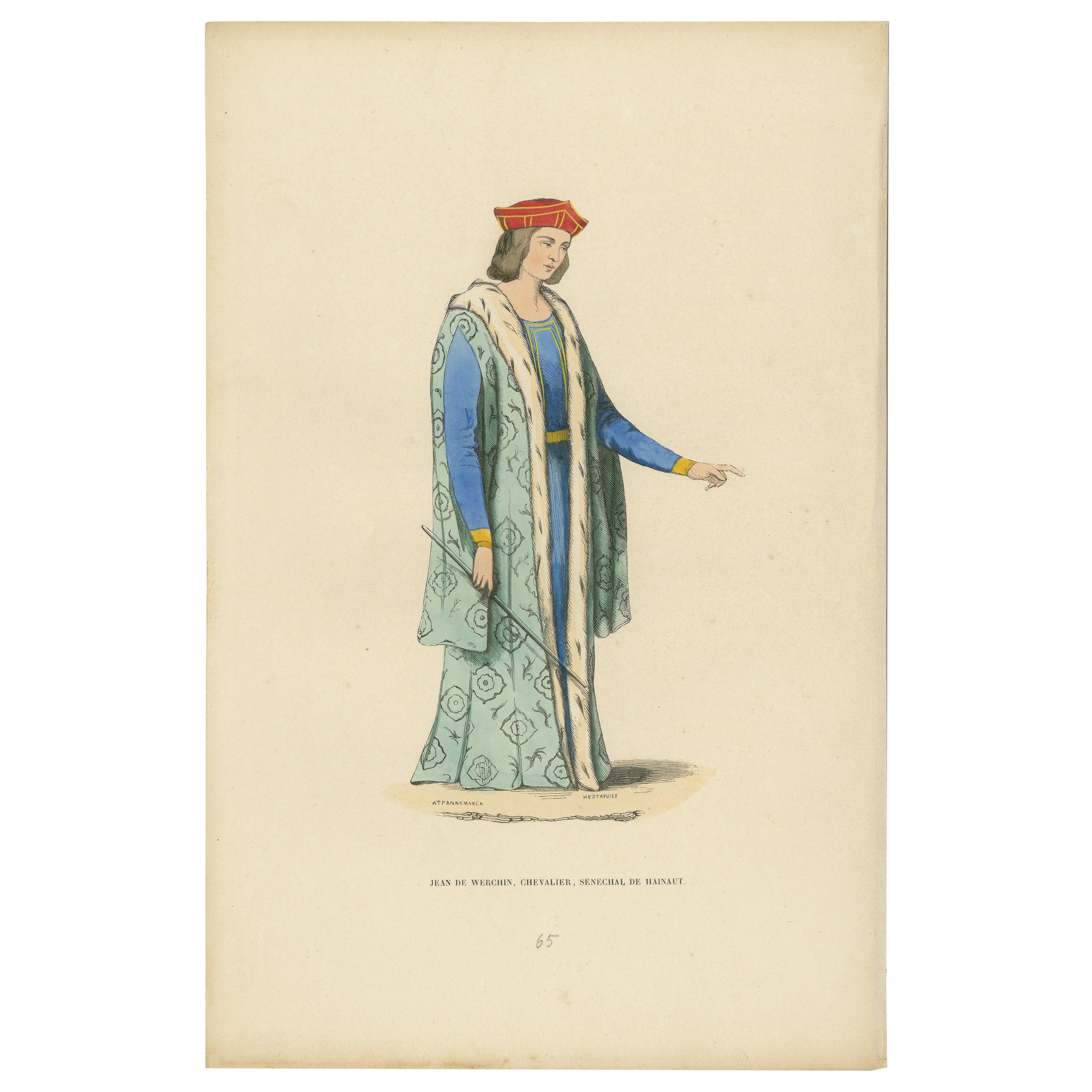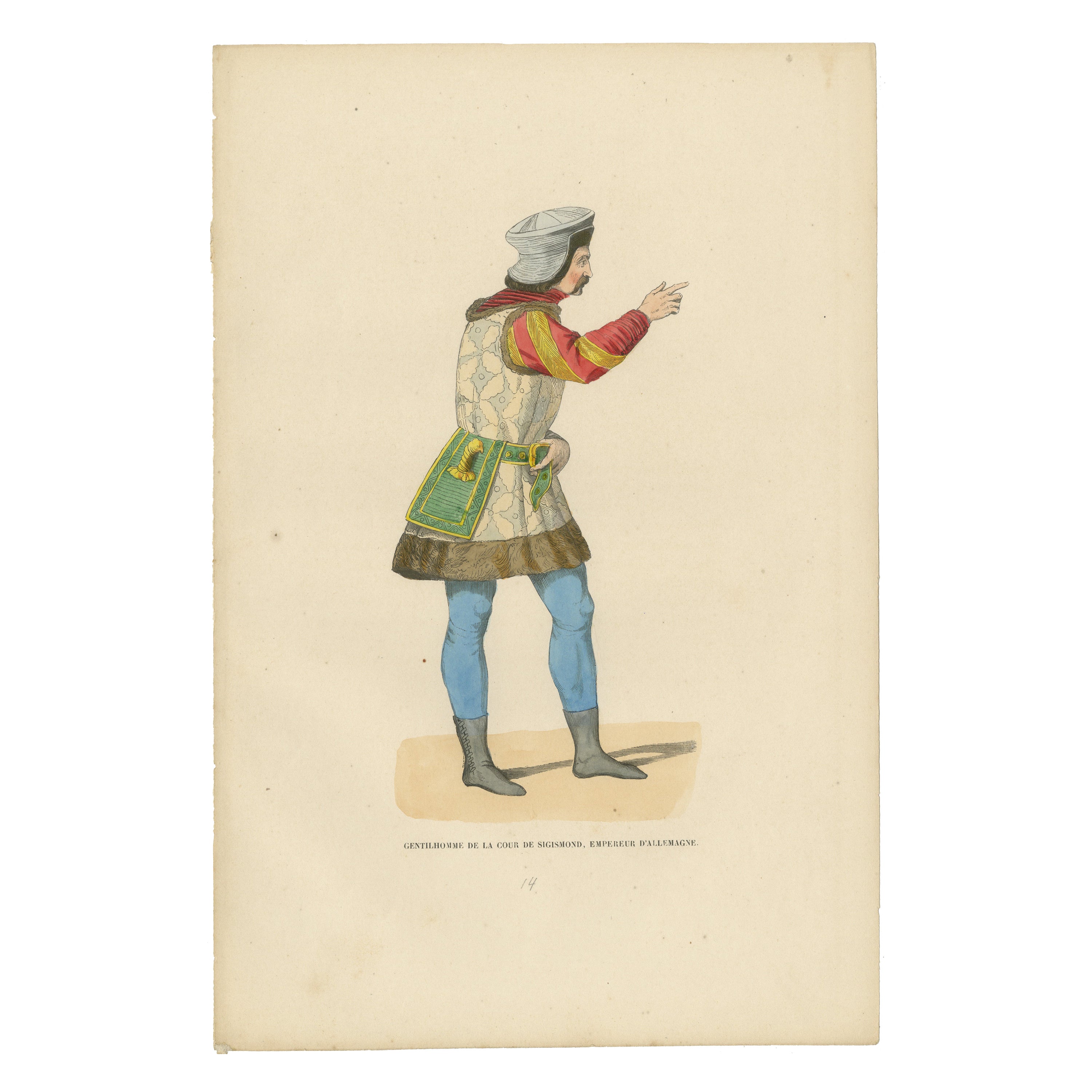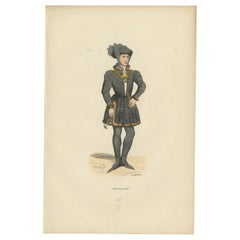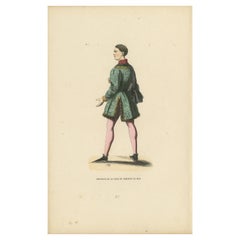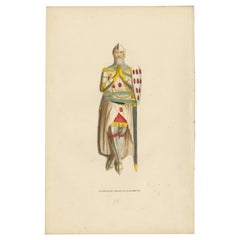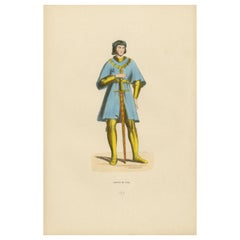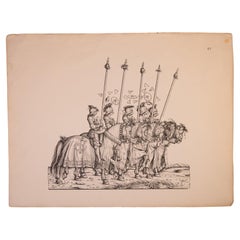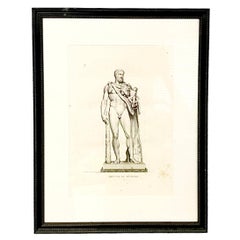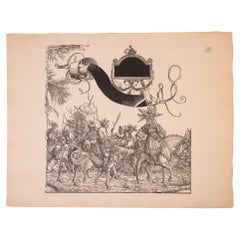Items Similar to Old Engraving of Philippe le Hardi: The Bold Duke of Burgundy in Council, 1847
Want more images or videos?
Request additional images or videos from the seller
1 of 7
Old Engraving of Philippe le Hardi: The Bold Duke of Burgundy in Council, 1847
$153.27
$191.5820% Off
£113.30
£141.6220% Off
€128
€16020% Off
CA$208.45
CA$260.5720% Off
A$233.57
A$291.9620% Off
CHF 121.58
CHF 151.9820% Off
MX$2,857.38
MX$3,571.7320% Off
NOK 1,543.27
NOK 1,929.0820% Off
SEK 1,457.60
SEK 1,821.9920% Off
DKK 974.66
DKK 1,218.3220% Off
Shipping
Retrieving quote...The 1stDibs Promise:
Authenticity Guarantee,
Money-Back Guarantee,
24-Hour Cancellation
About the Item
Title: "Philippe le Hardi: The Bold Duke in Council"
Description: This print captures Philippe le Hardi, also known as Philip the Bold, Duke of Burgundy, seated in a posture of consultation or leadership. He is depicted in the midst of governance or decision-making, a role befitting his historical reputation as a founder of the Burgundian state.
The Duke is attired in a blue doublet emblazoned with golden fleur-de-lis, a symbol of his connection to the French royal lineage. The doublet is tailored to his form, suggesting the refined tastes of Burgundian court fashion. The edges of the doublet feature a decorative border, adding to the noble appearance.
He wears a red and white striped chaperon, a stylish head covering for men of the period, which features a twisted scarf around the crown, indicative of his high social status. The chaperon complements his doublet with its own hint of golden embellishment.
His hose are striped in yellow and black, providing a striking contrast to the blue of his doublet. This choice of colors may reflect the heraldic colors of his house. The red footrest under his feet is a rich detail that adds a note of luxury and comfort.
Philippe's right hand is slightly extended as if in mid-gesture, perhaps making a point or issuing an order, while his left hand rests on his knee, grounding him in his authoritative position. His expression is one of contemplative leadership, and his eyes appear to be focused on an unseen interlocutor or thought.
This portrayal of Philippe le Hardi encapsulates the image of a duke actively involved in the arts of rulership and diplomacy that characterized the governance style of the powerful Burgundian dukes during the late Middle Ages.
The colors have a nice glow over them. Historically, egg whites, known as glair, and sometimes egg yolk were indeed used in illumination and painting, particularly in manuscripts, to give colors a brighter appearance and to add a sheen or gloss to the work. This technique was quite common during the Middle Ages and into the Renaissance.
Egg whites can be applied as a varnish over pigments to enhance their brightness and to protect the colors. This application could make the colors appear more vivid and also add a slight glossy sheen to the surface of the image.
Egg yolk, on the other hand, was commonly used as a binding agent in paint. It forms the basis of tempera paint, a medium that was widely used before the advent of oil painting. Egg yolk helps to create a durable and long-lasting color that adheres well to various surfaces.
In the context of the print from 1847, it's less likely that egg whites or yolks were used directly on the print, as by that time, commercial printing processes would have been more advanced and less reliant on such manual methods. However, if this print is a representation of an earlier style or is meant to mimic the appearance of hand-painted manuscripts, the original artists might have employed techniques or materials that gave a similar effect to those achieved with egg-based binders and varnishes.
- Dimensions:Height: 10.63 in (27 cm)Width: 7.09 in (18 cm)Depth: 0 in (0.02 mm)
- Materials and Techniques:
- Period:
- Date of Manufacture:1847
- Condition:Good. Overal light toning and light soiling but the image itself clean and hand-colored almost 200 years ago and still in expliciet colors. Aged paper with typically warm, yellowish-brown hue, mostly around the edges. Study the image carefully.
- Seller Location:Langweer, NL
- Reference Number:Seller: BG-13635-531stDibs: LU3054337895272
About the Seller
5.0
Recognized Seller
These prestigious sellers are industry leaders and represent the highest echelon for item quality and design.
Platinum Seller
Premium sellers with a 4.7+ rating and 24-hour response times
Established in 2009
1stDibs seller since 2017
2,494 sales on 1stDibs
Typical response time: 1 hour
- ShippingRetrieving quote...Shipping from: Langweer, Netherlands
- Return Policy
Authenticity Guarantee
In the unlikely event there’s an issue with an item’s authenticity, contact us within 1 year for a full refund. DetailsMoney-Back Guarantee
If your item is not as described, is damaged in transit, or does not arrive, contact us within 7 days for a full refund. Details24-Hour Cancellation
You have a 24-hour grace period in which to reconsider your purchase, with no questions asked.Vetted Professional Sellers
Our world-class sellers must adhere to strict standards for service and quality, maintaining the integrity of our listings.Price-Match Guarantee
If you find that a seller listed the same item for a lower price elsewhere, we’ll match it.Trusted Global Delivery
Our best-in-class carrier network provides specialized shipping options worldwide, including custom delivery.More From This Seller
View AllPhilippe le Bon or The Good, Duke of Burgundy: The Duke's Prestige, 1847
Located in Langweer, NL
Title: "Philippe le Bon: The Duke's Prestige"
Description: The print showcases Philippe le Bon, also known as Philip the Good, Duke of Burgundy, standing in a dignified pose that conveys authority and nobility. He was known for his patronage of the arts and the opulence of his court, and this is reflected in the intricate detail of his attire.
Philippe is dressed in a doublet with a patterned design, possibly embroidered with gold thread, which would have been a symbol of wealth and status during his time. The garment fits snugly to his form, a style that was fashionable among the nobility in the 15th century. The lower part of the doublet extends into a skirt, which is edged with fur, adding to the luxuriousness of his ensemble.
He wears hose that fit tightly to his legs, a common fashion of the time, which are practical for riding and daily activities of a nobleman. His shoes are pointed, following the style of the Burgundian court.
On his head, Philippe sports a chaperon, a type of headgear that was popular among men of rank. The chaperon features a rolled brim and an extended tail, known as a 'liripipe', which adds a distinctive flair to his profile.
Around his neck, he has a chain, from which hangs a badge or medallion, denoting his high rank and perhaps an order of chivalry. His right hand rests on the hilt of a dagger, hinting at the martial aspect of his role as a duke and the necessity for self...
Category
Antique 1840s Prints
Materials
Paper
$162 Sale Price
20% Off
Lord of the Court of Philip the Good, Engraved and Published in 1847
Located in Langweer, NL
The image presents a nobleman of the court of Philippe le Bon (Philip the Good), Duke of Burgundy. The nobleman stands in profile, gazing into the distance, with an air of contemplat...
Category
Antique 1840s Prints
Materials
Paper
$114 Sale Price
20% Off
Engraving of Le Chevalier Gifford de Léchampton: The Gallant Knight, 1847
Located in Langweer, NL
Title: "Le Chevalier Gifford de Léchampton: The Gallant Knight"
Description: This print portrays the knight Gifford de Léchampton in full regalia, stand...
Category
Antique 1840s Prints
Materials
Paper
$229 Sale Price
20% Off
Noble Bearing: Gaston de Foix as Illustrated in 'Costume du Moyen Âge', 1847
Located in Langweer, NL
Title: "Noble Bearing: Gaston de Foix as Illustrated in 'Costume du Moyen Âge'"
Description: The lithograph from "Costume du Moyen Âge," created in 1847, features a depiction of Gas...
Category
Antique 1840s Prints
Materials
Paper
$162 Sale Price
20% Off
Jean de Werchin, a Knight and Seneschal of Hainaut: The Knight's Poise, 1847
Located in Langweer, NL
Title: "Jean de Werchin: The Knight's Poise"
Description: This print illustrates Jean de Werchin, a knight and seneschal of Hainaut, captured in a moment of courtly grace. His postu...
Category
Antique 1840s Prints
Materials
Paper
$114 Sale Price
20% Off
Courtly Splendor: A Nobleman at Emperor Sigismund's Court, 1847
Located in Langweer, NL
The image depicts a man identified as a "Gentilhomme de la cour de Sigismond, empereur d'Allemagne," which translates to "Gentleman of the court of Sigismund, Emperor of Germany."
This individual is portrayed in a profile stance, dressed in attire that is indicative of the high-status courtiers during the time of Emperor Sigismund, who reigned in the early 15th century. He is wearing a turban-like headgear, which reflects the influence of Eastern fashion on European court attire, possibly due to the Ottoman influence or the general exchange of culture during the Crusades and subsequent interactions.
His doublet is richly patterned and he has puffed sleeves in red, which were fashionable among the nobility during the period. The garment is accented with a decorative belt that holds what appears to be a purse or a pouch. He also sports tight blue hose and pointed shoes, which complete the ensemble typical of a nobleman or a high-ranking court official in the Holy Roman Empire.
Egg whites can be applied as a varnish over pigments to enhance their brightness and to protect the colors. This application could make the colors appear more vivid and also add a slight glossy sheen to the surface of the image.
Egg yolk, on the other hand, was commonly used as a binding agent in paint. It forms the basis of tempera paint, a medium that was widely used before the advent of oil painting. Egg yolk helps to create a durable and long-lasting color that adheres well to various surfaces.
In the context of the print from 1847, it's less likely that egg whites or yolks were used directly on the print, as by that time, commercial printing processes would have been more advanced and less reliant on such manual methods. However, if this print is a representation of an earlier style or is meant to mimic the appearance of hand-painted manuscripts...
Category
Antique 1840s Prints
Materials
Paper
$153 Sale Price
20% Off
You May Also Like
Engraving of Maximilian I° Roman Emperor
Located in Alessandria, Piemonte
ST/728-1 . Engraving of Maximilian I°, beginning 1930, from the original engravings of the 16th and 17th centuries.
"Mounted knights in armour in a proce...
Category
Mid-20th Century Other Prints
Materials
Paper
19th Century French Framed Engraving, Hercule Et Telephe by Pierre Bouillon
Located in Bradenton, FL
By French painter and printmaker Pierre Bouillon. Plate from Musée des antiques, dessiné et gravé par P. Bouillon, avec des notices explicatives par J....
Category
Antique 19th Century Neoclassical Prints
Materials
Wood, Paper
Engraving of Maximilian I° Roman Emperor
Located in Alessandria, Piemonte
ST/728 /3 - Engraving of Maximilian I° - Procession (noy better specified) - from the original engravings of the 16th and 17th centuries by Albrecht Altd...
Category
Mid-20th Century Other Prints
Materials
Paper
Le Impératrice Eugénie Lithograph, c.1850s
Located in Savannah, GA
A large hand-colored lithograph entitled “Le Impératrice, Compiegne,” after the painting by Jean Victor Adam (1801-1866), circa 1850s. Depicted is the Empress Eugénie de Montijo, wi...
Category
Antique Mid-19th Century French Other Prints
Materials
Glass, Wood, Paper
Engravings Representing Le Chateau De Blois Engraved Par Skelton
By Skelton
Located in Saint-Ouen, FR
Engravings representing Le Chateau De Blois engraved Par Skelton and edited by the Musée du Louvres.
Category
20th Century French Louis XV Prints
Materials
Paper
Grand Dauphin, Louis of France, son of Louis XIV. Framed engraving. BAZIN, N
Located in Madrid, ES
Grand Dauphin, Louis of France, son of Louis XIV. Framed engraving. BAZIN, Nicolas (following Jean Baptiste Martin l'Ancien). France, 1682.
It has faults.
Engraving depicting Louis...
Category
Antique 17th Century European Baroque Decorative Art
Materials
Other
More Ways To Browse
Tailor Print
Antique Glass Powder Boxes
Antique Horse Wagon
Antique Hunting Accessories
Antique Hunting Pack
Antique Metal Rooster
Antique Metal Tea Pot
Antique Necessaire
Antique Pie Case
Antique Pill Box Gold
Antique Sake Set
Antique Silver Boxes Repousse
Antique Storm Glass
Antique Thimbles
Antique Victorian Grandfather Clock
Antique Wooden Swan
Art Deco Bed Frame Queen
Art Deco Buffet Mirror
